
Comparison test: Volkswagen Polo, Seat Ibiza and Ford Fiesta
Content
In a small family car comparison test, we promised: “Of course, once we get our hands on it, we will put it on a par with the best of the tests, that is, the Seat Ibiza. " And we did it: we took the Polo straight from the Slovenian presentation, looked for an equally motorized Ibiza and since it was the only one that came up to Seat in the mentioned comparison test, we added the Fiesta. It is clear that the order between the participants in the comparison test from the previous release will remain the same, but last but not least, the Fiesta was the best in many areas, it was great to have it handy for comparison. Paul. So? Is polo better than Ibiza? Is it more expensive than Ibiza? Where are its pros and cons? Read more!
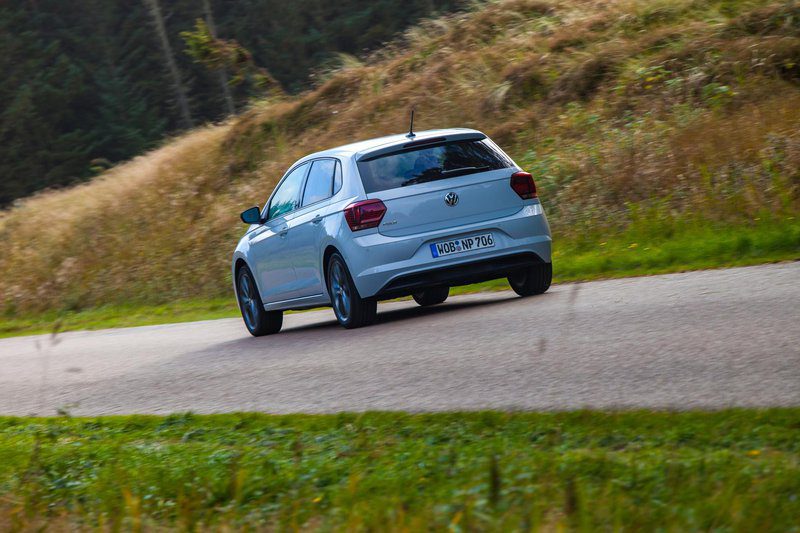
Since we've already met Seat's Ibiza, the new Polo's engine equipment comes as no surprise. For several years, the Volkswagen Group has been equipping cars of all the most popular brands with three-cylinder engines, and of course they have prepared various performance options that they adjust by adding various turbochargers. But both the Ibiza and the Polo had the same 115 horsepower engines under the hood. As we already noted in the comparison where Ibiza won, such motorization is quite enough for cars of this class. This also applies to the Polo engine. However, when we compared two examples from the same group, we were surprised - with similar capabilities, quite sharp and flexible, and good low-end responsiveness, they turned out to be very similar while driving. It was different when refueling. The Ibiza engine was definitely more economical. We haven't found a proper explanation yet, but we can probably attribute the difference to the different weights of the cars and perhaps the fact that the Polo's engine wasn't as well driven as the Ibiza, as we only got the Polo from a few hundred kilometers - but The Polo drove at city speeds, a little quieter. How small is the difference in motorization, the difference in position on the road is also used. This is almost non-existent, something was felt only in the comfort of riding on slightly worse surfaces; even in this regard, the Ibiza seems to have done a better job than the Polo - as if the latter wanted to be more sporty.
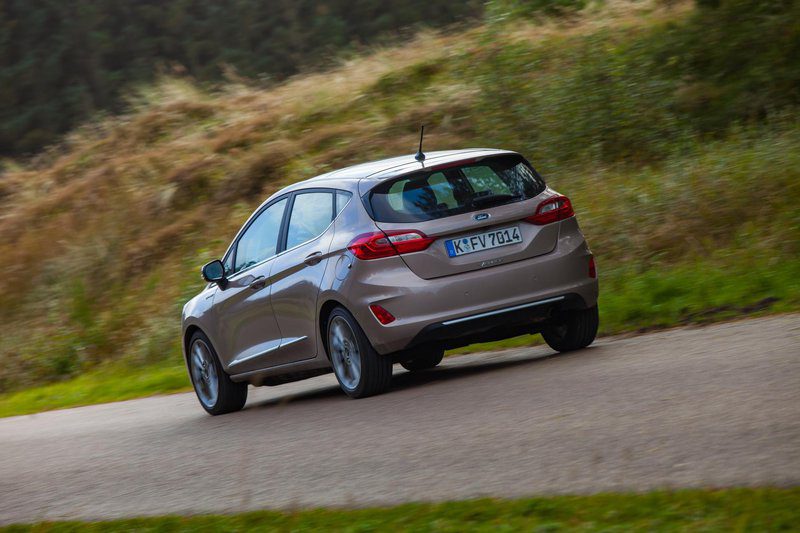
So Fiesta? The performance difference isn't big, but the Fiesta is a little less nervous at low revs, on the other hand, it seems to be closing its lag again at mid revs. Once again, we could say that it would probably be completely different if we had the one with the more powerful engine in this comparison (which we could already have tested).
Already in the first test, in the wider competition, the cars that challenged the Polo in this test also dominated in terms of form freshness. At Ford, the Fiesta's character was "split" and three different versions were offered: the sporty ST-Line, the elegant Vignale, and the Titanium version that combined the two characters. It can be said that the Fiesta has retained its distinctive shape, but at the same time they have unified the nose of the car with the current design principles prevalent at Ford. At Seat, we are accustomed to the leaders of the Volkswagen Group giving them more freedom in designing the shape of their cars. All this is clearly visible if you add up Ibiza and Polo. While the Polo retains a calm and recognizable shape and in some ways tries to identify itself as a small golf, in Ibiza the story is completely different. Sharp lines, steep slopes and pointed edges form a rather aggressive and striking shape. All this is seasoned with recognizable LED signatures on the headlights. Interestingly, history does not repeat itself inside. In fact, the Polo is more versatile and pretty in this element, while the Ibiza, surprisingly, with the exception of the plastic element in the body color, is rather reserved. Since both cars are built on the same platform, the interior proportions are similar. In the Polo, you can notice a little more airiness above the heads, and in Ibiza - a few more centimeters in width. There will be no problems with passenger space, regardless of whether you find yourself in the front or back seat. If you are a driver, you will easily find the ideal driving position, even if you are a tall man. The Fiesta has a problem, as the longitudinal offset is a little too small, but at least for the back of those sitting in front, a real luxury of spaciousness is created. The Fiesta will also be preferred when it comes to the choice of materials, as well as the quality and precision of workmanship. The plastic is better and softer to the touch, the handlebars are nicely thick, and all the buttons on the feedback armature feel really good.

Too bad the Polo didn't have the fully digital gauges we know from other Volkswagens (which you can see testing both Golfs in this edition of the magazine). Its gauges are the part that hasn't advanced since the previous Polo, and you can see it at a glance. If we understand the combination of (otherwise transparent) analog gauges and not the very high resolution LCD screen in between in Ibiza (given the status Seat has in the group), we expect something more here. Storage space is plentiful (usually a Volkswagen) and in the end, as we're always accustomed to in the Polo, everything is close at hand.
The Polo's infotainment system is practically the same as in Ibiza, which, of course, is logical, both cars are created on the same platform. This means that the screen is very crisp and vibrant in color, that (unlike the best infotainment system developed for the Golf and the larger VW) they have retained the rotary volume knob and that it goes well with smartphones. The two USB ports on the front contribute to this as well, but the fact that they are not on the back (and the same for the Fiesta and Ibiza, twice the USB on the front and nothing in the back) can be forgiven depending on the size of the car. ...
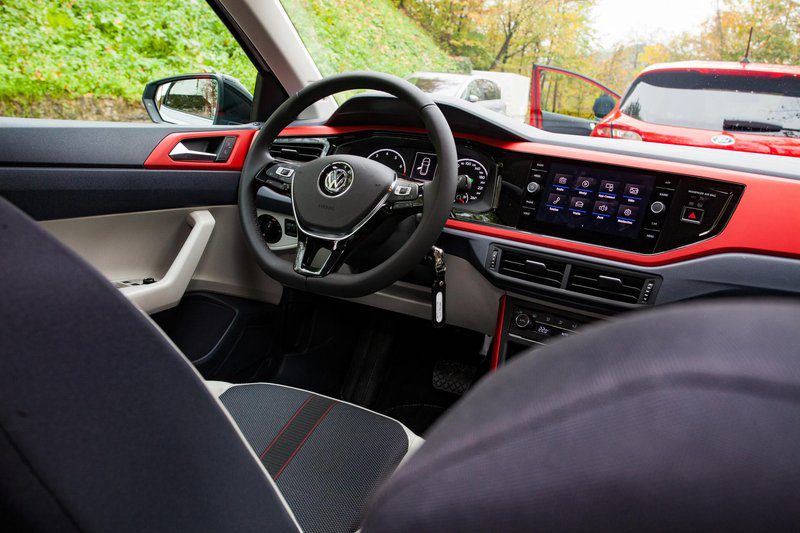
For the Ibiza, we can write almost the same thing as for the Polo, not only for the sensors and infotainment system, but for the entire interior, from its lighting to the lighting of the trunk and the hooks for hanging bags in it, and, of course, its size. and flexibility: they deserve the highest marks - like the Fiesta.
And the Fiesta also only has analog gauges with a (transparent, but not comfortable enough) LCD screen between them (which, compared to those in the Polo and Ibiza, shows less data at the same time, but interestingly, is also less noticeable) friendly). and it pays off with a really great Sync 3 infotainment system with a very crisp and crisp display, good graphics and user interface. It's a shame that this has gotten too out of hand (but only for those who push the driver's seat all the way back) and that they haven't opted for slightly less vibrant colors for night graphics. But overall, due to screen size and resolution, responsiveness and graphics, Fiestin Sync 3 has a slight edge here.
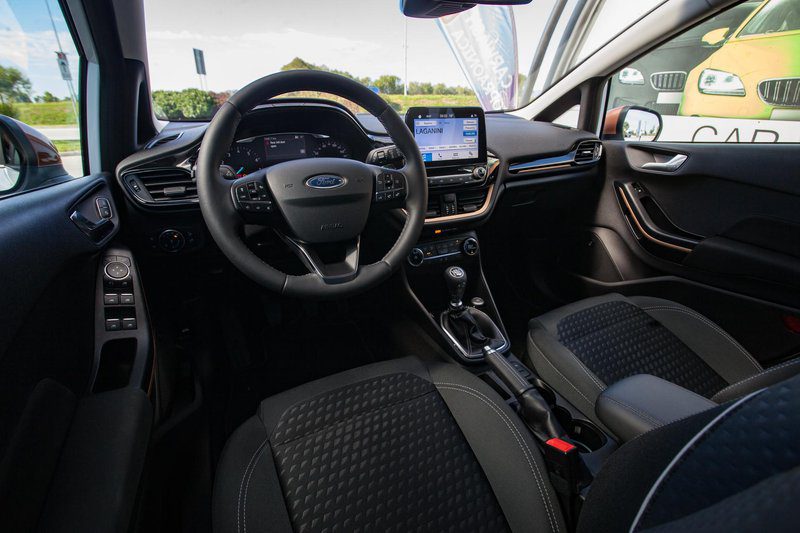
This time, all three participants were equipped with a six-speed transmission, and all had modern turbocharged three-cylinder engines under the hood, which first began to gain popularity in their car class and are still the most popular in it.
A direct comparison of the tested vehicles is not possible because it is difficult for importers to provide the exact vehicle they need. Therefore, for comparison, we looked at versions with the test car engine, manual transmission and equipment that you would like to install in the car: automatic light switch, rain sensor, self-extinguishing rearview mirror, keyless entry and start, infotainment system with Apple. CarPlay interface, DAB radio, front and rear parking sensors, blind spot monitoring, speed limiter, traffic sign recognition and electric rear power windows. The car also had to be equipped with the AEB emergency braking system, which also means a lot for the EuroNCAP crash test ratings, as without it the car can no longer receive five stars.

In pursuit of the listed equipment list, it is often necessary to use the highest equipment packages, but in the case of the Ford Fiesta, Seat Ibiza and Volkswagen Polo, this did not happen, as you can start with versions with medium equipment tiers. It is also true, as we found out at Ford Fiesta, that you can assemble a car based on Shine medium equipment at our editors' request, but a Fiesta with the desired equipment and a higher Titanium package will only cost you a few hundred more euros. Plus, you get quite a lot of other gear that Shine doesn't come with. Of course, the final price also depends on the discounts offered by all brands and can help you get a well-equipped car from the dealership at a much more affordable price.
What about the cost of driving, which is highly dependent on fuel consumption? With 4,9 liters of petrol consumed per 100 kilometers, the Seat Ibiza performed best on standard laps, behind the Ford Fiesta, which consumed more per deciliter or exactly five liters of petrol per 100 kilometers. In third place was the Volkswagen Polo, which, despite the same engine as the Ibiza, consumed 5,6 liters of fuel per 100 kilometers.
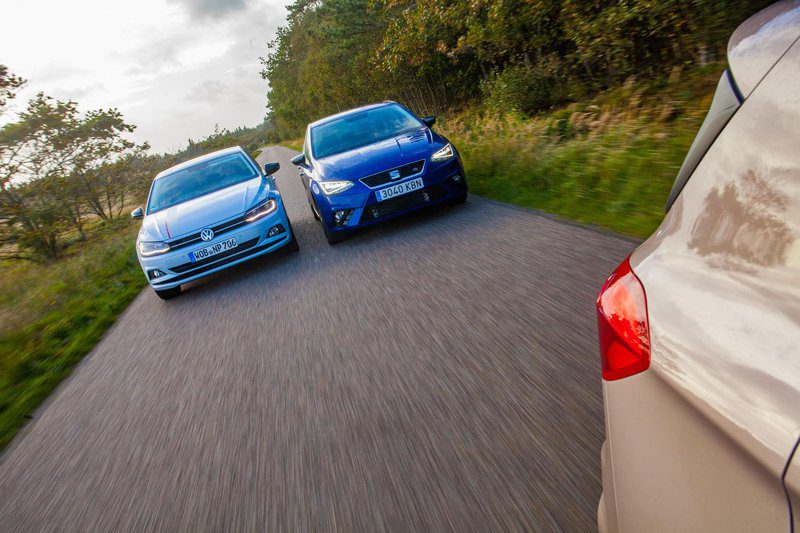
What does this mean in euros? A trip of 100 kilometers in Polo will cost you 7.056 euros (depending on the consumption rate). The same distance could be covered in a Fiesta for 6.300 euros, and a trip in an Ibiza would have cost us 6.174 euros. For a pleasant gasoline car, in all three cases, favorable numbers and further proof of how far gasoline technology has come, as well as confirmation of how small the difference between all three is. After all, it is clear that many customers can be dominated by completely subjective opinions, emotions, and even brand affiliation.
VW Volkswagen Polo 1.0 TSI
Basic data
Technical information
| engine: | 3-cylinder - in-line - turbo gasoline, 999 cm3 |
|---|---|
| Energy transfer: | front wheels |
| Mass: | vehicle weight 1.115 kg / load capacity 535 kg |
| External dimensions: | 4.053 mm x 1.751 x 1.461 mm |
| Inner dimensions: | Width: front 1.480 mm / back 1.440 mm |
| Box: | 351 1.125-l |
Seat Ibiza 1.0 TSI seat
Basic data
Technical information
| engine: | 3-cylinder - in-line - turbo gasoline, 999 cm3 |
|---|---|
| Energy transfer: | front wheels |
| Mass: | vehicle weight 1.140 kg / load capacity 410 kg |
| External dimensions: | 4.059 mm x 1.780 x 1.444 mm |
| Inner dimensions: | Width: front 1.460 mm / back 1.410 mm Height: front 920-1.000 mm / back 930 mm |
| Box: | 355 823-l |
Ford Fiesta 1.0 EcoBoost 74 kW
Basic data
Technical information
| engine: | 3-cylinder - in-line - turbo gasoline, 993 cm3 |
|---|---|
| Energy transfer: | front wheels |
| Mass: | vehicle weight 1.069 kg / load capacity 576 kg |
| External dimensions: | 4.040 mm x 1.735 x 1.476 mm |
| Inner dimensions: | Width: front 1.390 mm / back 1.370 mm Height: front 930-1.010 mm / back 920 mm |
| Box: | 292 1.093-l |